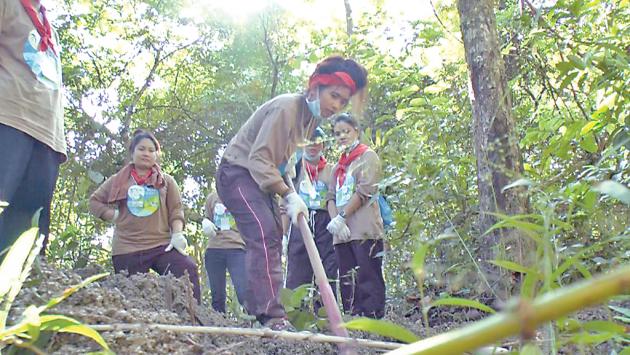Illegal loggers target Khao Ang Ru Nai

Wildlife sanctuary in eastern region threatened by deforestation
DEFORESTATION is threatening a wildlife sanctuary that is not just the most abundant forest zone in Thailand’s eastern region but also home to more than a third of the country’s wild animals.
The Khao Ang Ru Nai sanctuary spans border zones along five provinces, namely Chachoengsao, Chon Buri, Rayong, Chanthaburi and Sa Kaew.
“We have just 172 forestry officials to protect the forest zone that covers around 683,750 rai. It is now facing threats from various illegal logging groups,” Khao Ang Ru Nai chief Sermphan Sariman said over the weekend.
He is most worried about the illegal loggers targeting Siamese Rosewood, which fetches a significant price in the market.
Sermphan said his office had detected 82 illegal logging cases this year alone. As many as 112 suspects had been arrested with logs as well as processed wood boards seized during the past 10 months. Over the same period, one suspect died during a fight with arresting officials.
Sermphan said some suspects were people who lived in the zone before it was declared a wildlife sanctuary in 1992.
“They are familiar with the area,” he said.
He added that there were investors hiring henchmen to cut down trees in Khao Ang Ru Nai Wildlife Sanctuary too. This zone is in the headwaters of the Bang Pakong River in Chachoengsao, the Tanod Canal in Chanthaburi and the Prasae River in Rayong.
Amnuay Artchula, a PR official at the sanctuary, said her office had tried to counter illegal logging by educating children about the need to protect natural resources.
“It’s easier to let children speak to their parents. If children see someone hire their parents to illegally cut down trees, they can always speak up,” she said.
In addition to these battles against illegal logging, Sermphan said a plan was also needed for the growing elephant population at Khao Ang Ru Nai Wildlife Sanctuary.
“There are more than 400 wild elephants here now. Each needs around an area of six to seven square kilometres to rummage for food,” he pointed out.
Dr Trirach Pukotchasarnseen, who heads the Foundation for Environmental Education for Sustainable Development (Thailand), recommended creating mineral licks for wild animals.
“These manmade mineral licks could help retain the abundance and proper ecosystems in the long run,” he said.
RELATED
